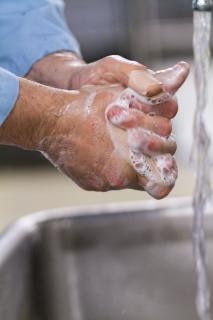
Most people don't think hand washing is that big of a deal, but they don't know how easily germs are spread. For germs to spread, all they need to do is make contact with another object/person. People don't realize how much they touch their own eyes, mouth, or nose, and how much germs are spread within school desks, books, pencils, and lunch tables. "Removing germs through hand washing helps prevent diarrhea and respiratory infections and may even help prevent skin and eye infections." says the Centers for Disease Control and Prevention (CDC). Also, not using soap is like not washing your hands at all. Soap can cut the germs on your hands, but not using soap doesn't kill any of the germs.
The experiment, though, was interesting. We watched 20 people go in and out of the restroom, and 30% didn't wash their hands; 30% is a big percentage of people. If there are around 1,100 people in the school, then that means 330 of those people don't wash their hands. Imagine how many of those people are your friends, who you high five, hug, or come in contact with every day. Now, we’re not asking you to go and never make contact with any other human ever again. We're just asking that you take 20 seconds to wash your hands. Those 20 seconds can save you from missing a week of school for sickness because we all know that if you miss one week of school you will probably start failing four classes and will have a mountain of homework the next day.
The moral of the story is: take 20 seconds to wash your hands with soap. It'll help you, your friends, and the school to be cleaner and healthier. Don't be lazy about it, hand washing is important.







